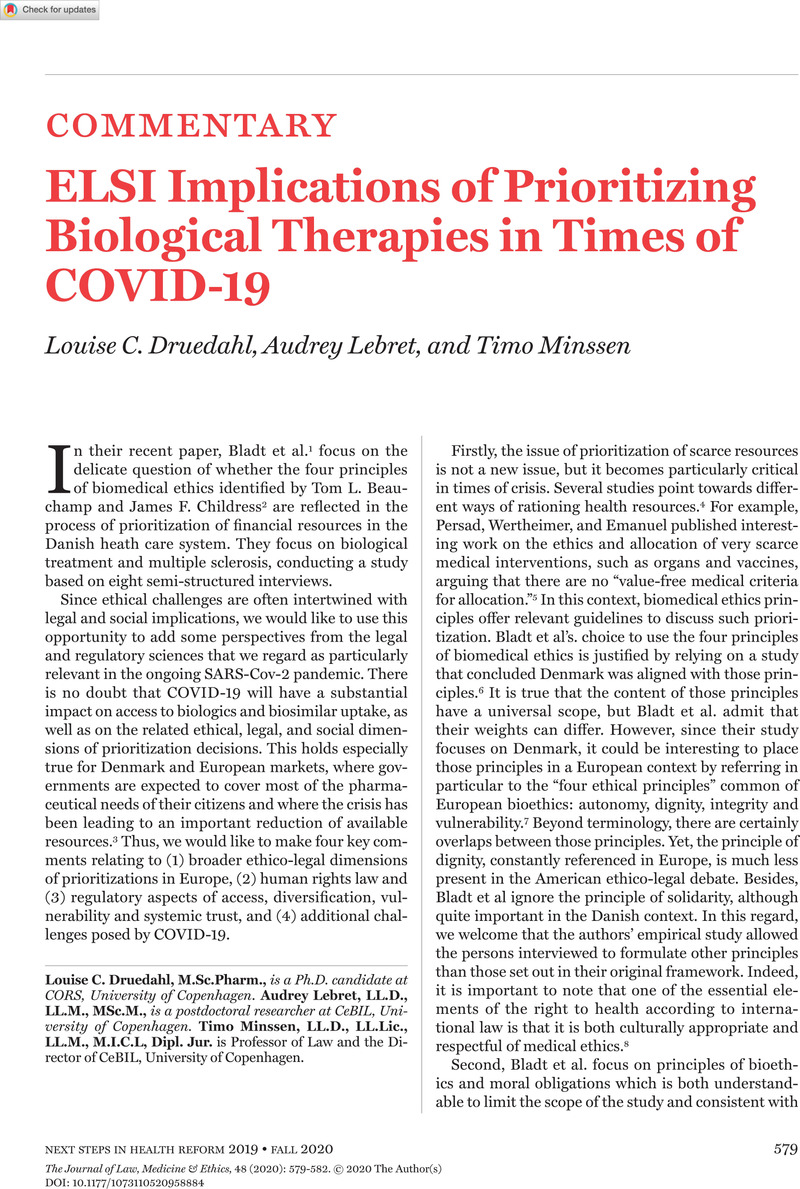Crossref Citations
This article has been cited by the following publications. This list is generated based on data provided by Crossref.
Minssen, Timo
and
Gerke, Sara
2021.
Pandemien und Ethik.
p.
179.
Druedahl, Louise C.
Kälvemark Sporrong, Sofia
Minssen, Timo
Hoogland, Hans
De Bruin, Marie Louise
van de Weert, Marco
Almarsdóttir, Anna Birna
and
Cui, Wenguo
2022.
Interchangeability of biosimilars: A study of expert views and visions regarding the science and substitution.
PLOS ONE,
Vol. 17,
Issue. 1,
p.
e0262537.
Bladt, Tara
Vorup-Jensen, Thomas
and
Ebbesen, Mette
2023.
Principles for Just Prioritization of Expensive Biological Therapies in the Danish Healthcare System.
Journal of Bioethical Inquiry,
Vol. 20,
Issue. 3,
p.
523.
Minssen, Timo
and
Gerke, Sara
2023.
Pandemics and Ethics.
p.
165.





